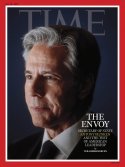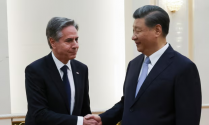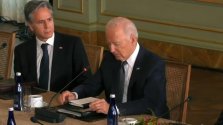Under instruction from master. I expect more of these types of infringements under Trump, so an appropriate response needs to be formulated. Diaoyu islands and Japanese auto companies operating in China are the first to come to mind.A new level of Taiwan provocation by Japan.
Are the Nippon Kaigi in the Japanese government so eager to start a war with China? It will never end well for Japan, no matter what kind of war plans they have for China.
You are using an out of date browser. It may not display this or other websites correctly.
You should upgrade or use an alternative browser.
You should upgrade or use an alternative browser.
Miscellaneous News
- Thread starter bd popeye
- Start date
You know how Trump negotiated a deal with the Taliban that led to the US withdrawal from Afghanistan a year later (under Biden)? We;;, apparently that was a big mistake. Because China:
If ever there was a rationale for placing Chinese bases, ABM batteries and a PLAN fleet on Cuba and Latin America, this would be it.
These politicos don't even know what Iron Dome is. It is just a cheap short range rocket for point defense against artillery shells and MLRS rockets. It is meant to defend against something like the Grad.Trump brought up Iron Dome for the US again. Iron Dome isn't going to save the US from ICBMs so what missile threat is he worried about? From Canada and Mexico? If the US was so vulnerable to missile attacks that Iron Dome was meant for, why hasn't anyone already launched an attack on the US. Let me guess... all potential attackers saw Trump as President in the future and was too scared to do it.
Yes waste the US taxpayer money on something that the US doesn't need. Trump didn't finish the wall between the US and Mexico he promised. And now he thinks he can encircle the US with Iron Dome...?
Israel does have defense against ICBMs but that is the Arrow system. The latest version is Arrow 3.
Indeed, and even then Iron Dome can't handle the volume of fire Hezbollah is fully capable of doing let along the combined Axis of Resistance. A system like Arrow 3 can't handle that equivalent volume of strategic fire either, which is why I say that conventional global strategic strike systems have their place and role alongside the nuclear strike components.These politicos don't even know what Iron Dome is. It is just a cheap short range rocket for point defense against artillery shells and MLRS rockets. It is meant to defend against something like the Grad.
Israel does have defense against ICBMs but that is the Arrow system. The latest version is Arrow 3.
AssassinsMace
Lieutenant General
And Trump said he was going punish countries that don't use the dollar while Republicans want to deny countries from using the dollar as a form of punishment.

Blinken to meet Chinese foreign minister next week
U.S. Secretary of State Antony Blinken said Friday that he would meet with Chinese Foreign Minister Wang Yi next week in Laos, as that country hosts senior officials of the Association of Southeast Asian Nations, or ASEAN.
Blinken said he speaks with Wang “on a fairly regular basis,” which is important for clarifying each country’s intentions and avoiding unintended conflicts.

Blinken in March 2021
Blinken in July 2024: "My old pal Wang Yi will probably meet me next week in Laos, right?"
Ever since that Alaska smack down by Tiger Yang, our friend Blinken hasn't been the same.




Last edited:
This picture make me think Blinken will die before Biden. Probably because heart problem. Lol
what about that?. i already posted several links here about 1945 summit between US President and Saudi King. from US side said that this meeting was about creating Jewish state. Saudi sides is quiet what they got in return. from what i understand Saudis got a good deal for most of Global South and that include Asia.Palestine
Even if there was no deal and US supported Israel than what happened after that like PLO and its former leader that kind of society i have my own doubt that Saudis will support all the way. Saudi are very polite and generous towards muslim world. They will put blame on British or some others but not name the muslim societies that are Europhile.
Before that famous encounter, King Abdulaziz had recovered in April 1913 Al-Ahsa from the Ottomans in a preemptive step to block any British-Ottoman agreement to share influence in the Arabian Peninsula. The Anglo-Ottoman agreement was signed in late July 1913, according to which the Ottoman Empire ceded the coast of the Persian Gulf to Britain.
He was keen on his country’s sovereignty, which made him constantly express friendship and try to avoid confrontation despite his distaste for British policies.
The meeting had political, humanitarian, economic and military dimensions. King Abdulaziz disposed of British influence, affirmed his position on the Palestinian issue, and relieved the monetary link to the pound sterling. Moreover, the Saudi Defense Agency became a ministry.
According to various sources, the historic meeting between the two leaders, apart from the Palestine, touched on the following issues: guaranteeing the sovereignty of the Kingdom, especially as the world war was still raging and King Abdulaziz did not disregard foreign ambitions in his country; developing the Saudi army and ensuring the independence of the Arab countries under colonialism, as well as the economic aspect relating to freedom of trade, services and the oil relations.
The meeting represented the largest Western-Islamic alliance, and symbolized the integration with the Islamic world with its resources, population, products, oil, strategic location and warm water ports.
You also need to purge anime, manga, etc to eliminate Japanese culture in China. These types of media is nothing but harmful. You also need to forbid Chinese citizens come to Japan for tourism.Under instruction from master. I expect more of these types of infringements under Trump, so an appropriate response needs to be formulated. Diaoyu islands and Japanese auto companies operating in China are the first to come to mind.
I missed the craziest part of that article.Von der Leyen vows to stop China from invading Taiwan
The US warned of Beijing’s readiness to invade by 2027, which would be during the five-year mandate the Commission president is seeking.
Can the new eight national alliance take on China in 21st century? We're going to find out. China should start AR during RIMPAC 202X, would make it extra spicy.
Von der Leyen warned against the rapid rise in China's military expenditure in her manifesto.
"Combined EU spending on defence from 2019 to 2021 increased by 20 percent," she said in the document. "In that time, Russia’s defence spending increased by almost 300 percent and China's by almost 600 percent."
TIL China's defence spending went up 600% from 2019 to 2021. That's a lot of serial numbers SDF members missed.
